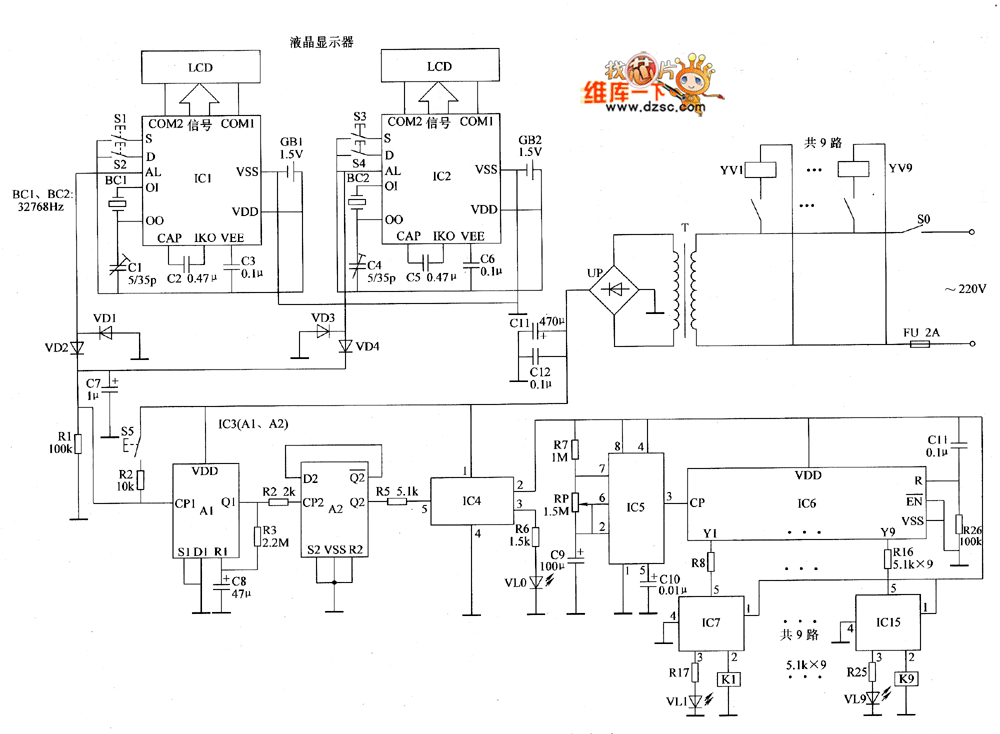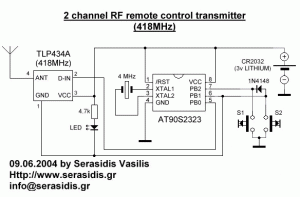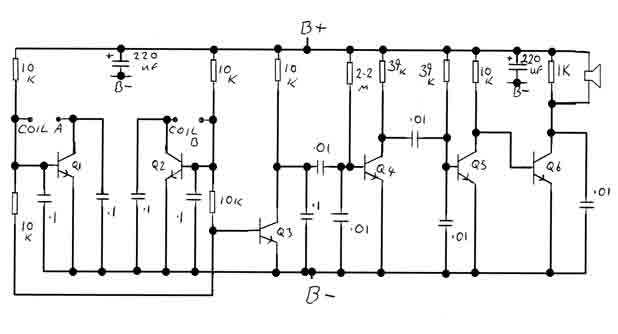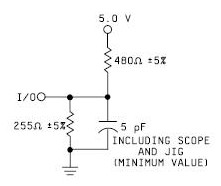
Automatic sprinkler controller circuit diagram 1

The automatic sprinkler controller circuit consists of a clock timing controller, a monostable flip-flop, a bistable flip-flop, an electronic switch, a self-excited multivibrator, a counter, a solenoid valve control circuit, and a power supply circuit. The power supply circuit includes a fuse (FU), a power switch (SO), and a power transformer.
The automatic sprinkler controller circuit is designed to automate the irrigation process by controlling the operation of solenoid valves based on a pre-defined schedule. The clock timing controller serves as the central timing mechanism, generating timed signals that dictate when the irrigation should occur.
The monostable flip-flop is utilized to create a single output pulse in response to an input trigger, effectively allowing for precise timing control of the sprinkler activation. The bistable flip-flop, on the other hand, maintains its state until it receives a trigger to change, enabling the system to remember whether the sprinklers are currently on or off.
An electronic switch is employed to manage the power supply to the solenoid valves, allowing for the control of high-current devices without direct mechanical switches. The self-excited multivibrator generates square wave signals that can be used for timing or triggering other components within the circuit.
The counter component keeps track of the number of cycles or timing intervals, ensuring that the irrigation system operates within the set parameters. The solenoid valve control circuit directly interfaces with the solenoid valves, allowing for the flow of water to be controlled based on the signals received from the timing components.
The power supply circuit is crucial for the operation of the entire system and includes a fuse (FU) for protection against overcurrent, a power switch (SO) for manual control, and a power transformer to step down the voltage to a usable level for the circuit components. Together, these elements create a comprehensive system capable of managing irrigation efficiently and effectively.The automatic sprinkler controller circuit is composed of the clock timing controller, monostable flip-flop, bistable flip flop, electronic switch, self-excited multivibrator, counter, solenoid valve control circuit and power supply circuit, and the circuit is shown as the Figure. Power supply circuit is composed of the fuse FU, power switch SO, power transf.. 🔗 External reference
The automatic sprinkler controller circuit is designed to automate the irrigation process by controlling the operation of solenoid valves based on a pre-defined schedule. The clock timing controller serves as the central timing mechanism, generating timed signals that dictate when the irrigation should occur.
The monostable flip-flop is utilized to create a single output pulse in response to an input trigger, effectively allowing for precise timing control of the sprinkler activation. The bistable flip-flop, on the other hand, maintains its state until it receives a trigger to change, enabling the system to remember whether the sprinklers are currently on or off.
An electronic switch is employed to manage the power supply to the solenoid valves, allowing for the control of high-current devices without direct mechanical switches. The self-excited multivibrator generates square wave signals that can be used for timing or triggering other components within the circuit.
The counter component keeps track of the number of cycles or timing intervals, ensuring that the irrigation system operates within the set parameters. The solenoid valve control circuit directly interfaces with the solenoid valves, allowing for the flow of water to be controlled based on the signals received from the timing components.
The power supply circuit is crucial for the operation of the entire system and includes a fuse (FU) for protection against overcurrent, a power switch (SO) for manual control, and a power transformer to step down the voltage to a usable level for the circuit components. Together, these elements create a comprehensive system capable of managing irrigation efficiently and effectively.The automatic sprinkler controller circuit is composed of the clock timing controller, monostable flip-flop, bistable flip flop, electronic switch, self-excited multivibrator, counter, solenoid valve control circuit and power supply circuit, and the circuit is shown as the Figure. Power supply circuit is composed of the fuse FU, power switch SO, power transf.. 🔗 External reference





